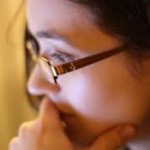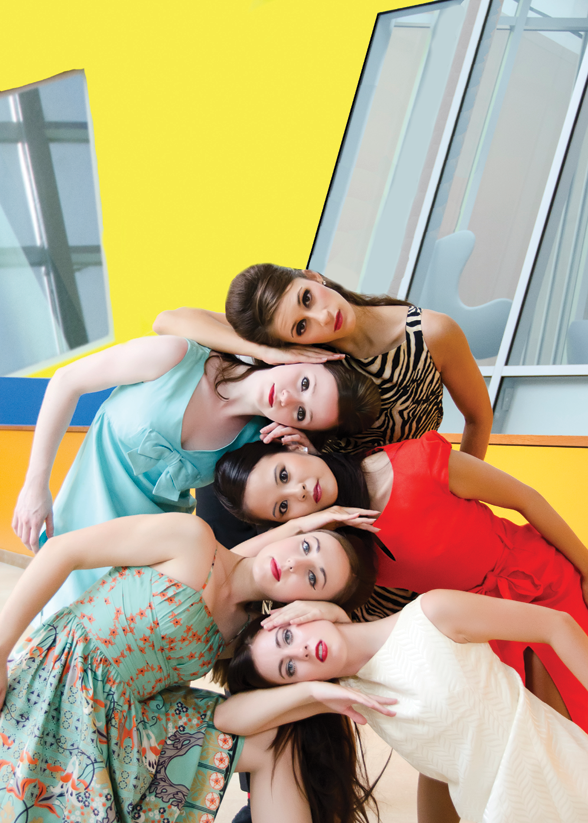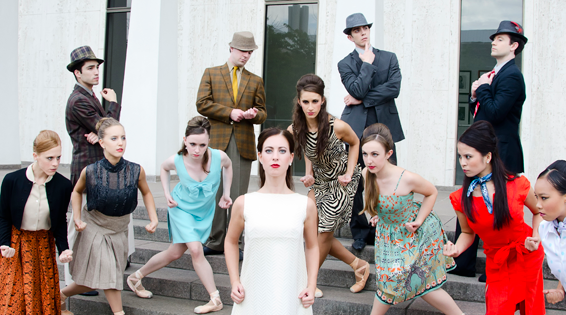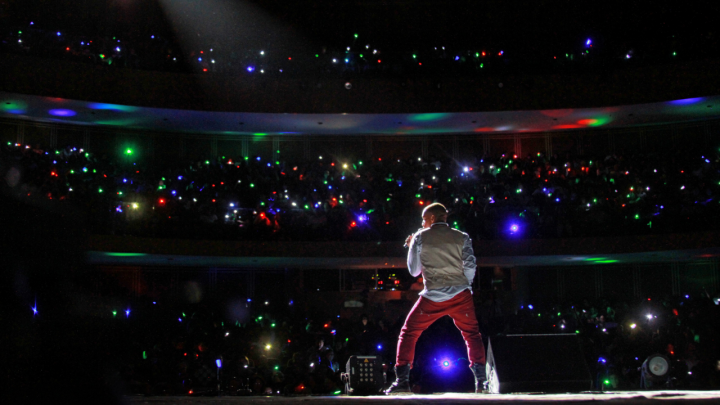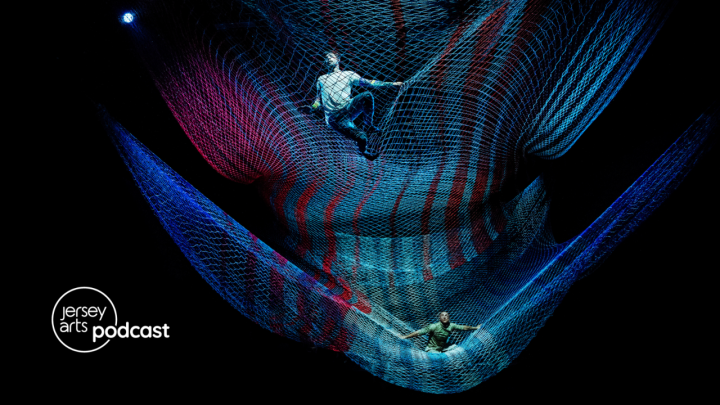"Generations: Influences from the Modern Age" with American Repertory Ballet

This Friday and Saturday, American Repertory Ballet presents a triple bill of works in “Generations: Influences from the Modern Age” at Two River Theater in Red Bank. The three works in the program are: “There is Time” by José Limón, “Sea Shadow” by Gerald Arpino and “Rite of Spring” by Douglas Martin. Douglas Martin, who is also ARB’s Artistic Director, says that the idea behind this triple bill is that it “represents the influence that past generations have on their future counterparts.” Martin explains that “current artists absorb the knowledge of past generations,” that dancers are “influenced by the style, narrative and construction” of works they perform and that choreographers “process those experiences and reach out to find your voice.”
That’s one of the things I find really interesting about the history of dance creation and performance. It’s a real person-to-person, artist-to-artist experience. Choreographers often create their works directly in the studio with the dancers, influenced by the dancers, their personalities and process. And even after that dance is first performed and it goes onto be danced at another company, the work is often taught to the dancers by a person close to the work.
This is different than with an orchestral piece, for example – while orchestras will have a conductor that helps guide the interpretation of the work, the musicians are playing written music, that includes notations from the composer. In dance, it’s a very personal relationship, which can be handed down over generations of dancers.
With a ballet that was originally choreographed by George Balanchine, for example, written notes about the steps are written down, and dancers can also watch videos, but there is always an expert (often one of Balanchine’s original dancers) who helps the new dancers embody the work in the way that Balanchine originally intended. Although every dancer and teacher will interpret the movements in different ways, it’s still really exciting to think about the oral and physical legacy playing out in the rehearsal studios and on the stages.
I suppose it’s also really scary, too: dance often depends on this oral history to maintain the original intentions of its masterworks.
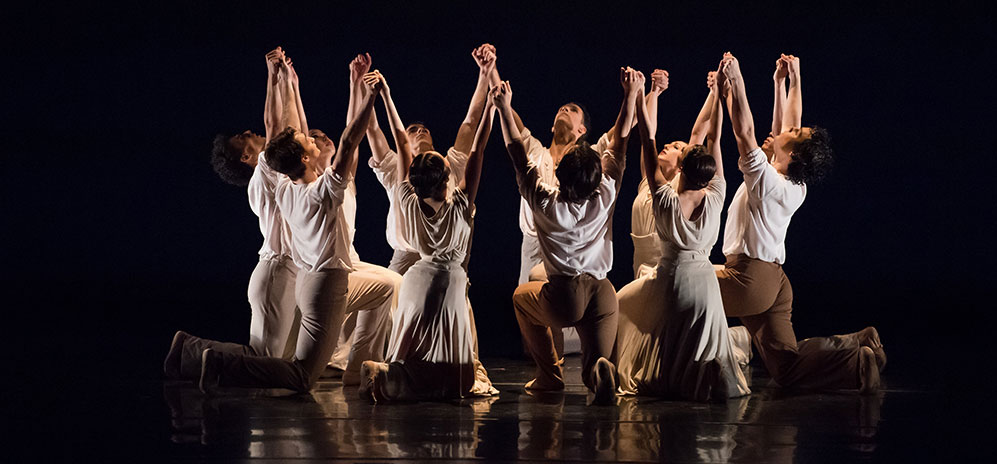
American Repertory Ballet's There Is A Time
The first work on ARB’s program, “There is Time” is a deeply evocative work by legendary modern dancer and choreographer José Limón. ARB first performed the work in 2015, as part of the José Limón International Dance Festival at New York’s Joyce Theatre and it was set on the company by world-renowned reconstructor and director Sarah Stackhouse. Stackhouse danced with Limón’s dance company from 1958-1969 as a principal dancer and partner to Limón, and was featured in many of the female roles in his masterworks. Now, in setting “There is Time” on the ARB dancers, Stackhouse links José Limón and the ARB dancers – not only imparting the steps, but conveying the essence of the work itself to the dancers, and through them, to us as the audience.
“Sea Shadow,” the second work on the “Generations” program, was choreographed by Gerald Aprino. This is the first time that ARB has performed this work, but it holds some significance for ARB, especially for Martin – in 1989, he performed the male lead in a major revival of the work while he was a dancer with the Joffrey Ballet. “Sea Shadow” is being performed here at ARB as part of the Joffrey/Arpino Celebration marking the 10th anniversary of Gerald Arpino's passing and the 30th anniversary of Robert Joffrey's passing. The Arpino Foundation is honoring these two influential innovators by organizing performances of their work by renowned dance companies across the nation and the globe.
The final work on the program is “Rite of Spring,” a ballet choreographed by Martin. I bet you’re thinking: “Wait a minute! I thought ‘Rite of Spring” was an early 20th-century work!” And that’s true, but here Martin has reset the work, maintaining the original idea of being a celebration of spring and a statement on ritualistic behavior and sacrifice. But in Martin’s version, the setting has been changed to 1961 corporate America (a la “Mad Men”) and Martin uses the work to explore office relations and gender roles – especially the struggle of women to break through traditional male roles.
“Rite of Spring” was programmed by ARB in part to honor Women’s History Month, which takes place in March. While the work begins with a male-dominated work environment, one female dancer (Shaye Firer), who portrays the “Chosen One,” is singled out and promoted, taking on more substantive work. In the second movement, the Chosen One paves the way for the women who follow to rise in the ranks and fight for workplace equality.
Shaye Firer danced this same role of the Chosen One in the 2013 premiere of the “Rite of Spring” and again reprises her role in this current production. And like “Sea Shadow,” “Rite of Spring” also has importance for Martin: he was a cast member in Joffrey Ballet's historic 1987 reconstruction of Nijinsky's original 1913 version.
ARB’s “Generations: Influences from the Modern Age,” is a multi-layered program of dance, which can be appreciated and enjoyed on multiple levels. Of course, the main layer is the current onstage performance. But audiences in the know (which now includes you, dear reader!) will be able to appreciate the resonance brought to the stage from these relationships with the original creators and prior productions, as well as our own personal stories.
The Details: American Repertory Ballet presents "Generations: Influences from the Modern Age" on Friday and Saturday, March 23 and 24 at 8:00 p.m. at Two River Theater, located at 21 Bridge Avenue in Red Bank, N.J. Tickets start at $28.
Bonus Details: ARB will also present "Generations" on Friday, April 20 at 8:00 p.m. at McCarter Theatre Center, located at 91 University Place in Princeton, NJ. Tickets start at $27. For more information, visit arballet.org.
